Alien or art? I trekked to the mysterious Welsh monolith to find out
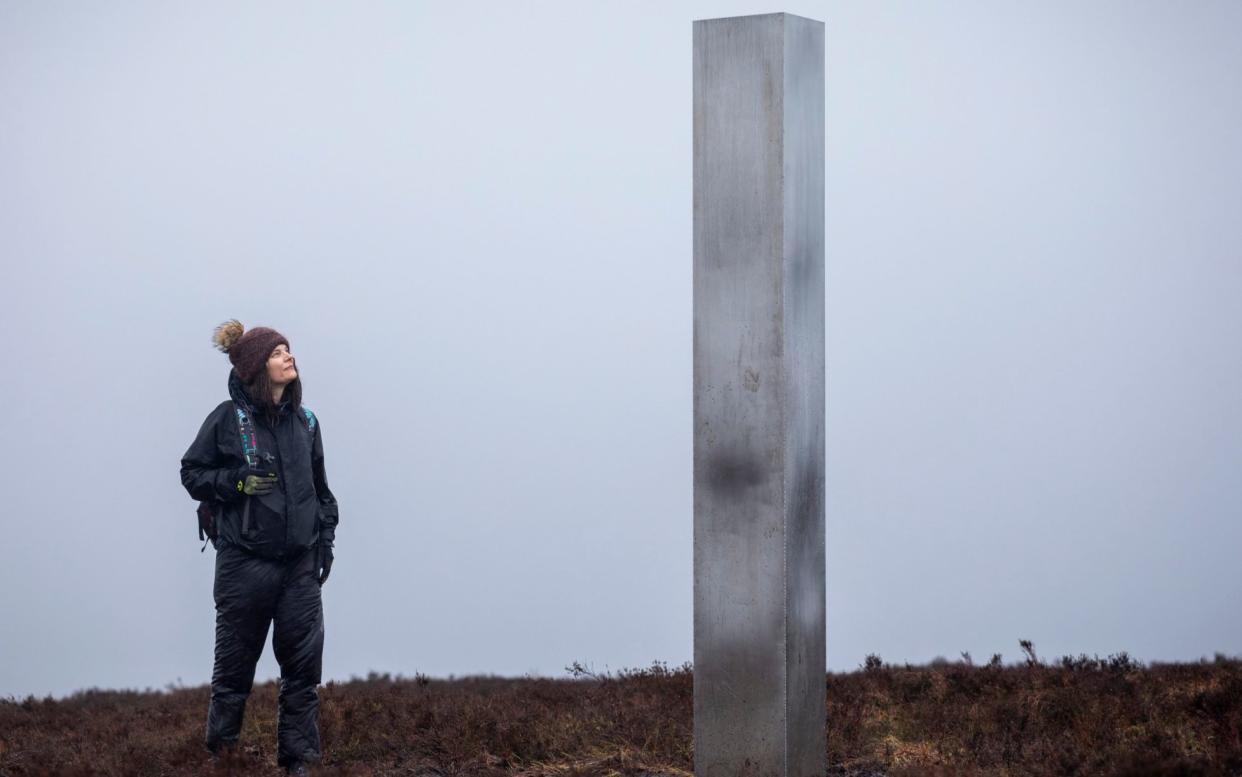
On a sunny day, there would be many good reasons to don my walking boots and hike up Hay Bluff to its summit.
Not only is it set in the beautiful border territory of Wales and England, with sweeping views down onto the Wye Valley, it’s also just four miles south of the historic market town of Hay-on-Wye, packed with delightful book shops.
Then there’s the fact that it’s a convenient walk – 1.7 miles there and back – and part of the Offa’s Dyke national trail, with a satisfying trig point on the top.
But today, in the lashing rain, with minimal visibility and the mossy ground treacherous underfoot, there can be only one reason to make this journey – to see for myself the monolith that has mysteriously emerged on this mountain top and become the talk of the town, if not the world.
The 10ft non-magnetic structure, made from metal sheets forged into a triangular prism, appeared on the hilltop last weekend, prompting claims a UFO had landed.
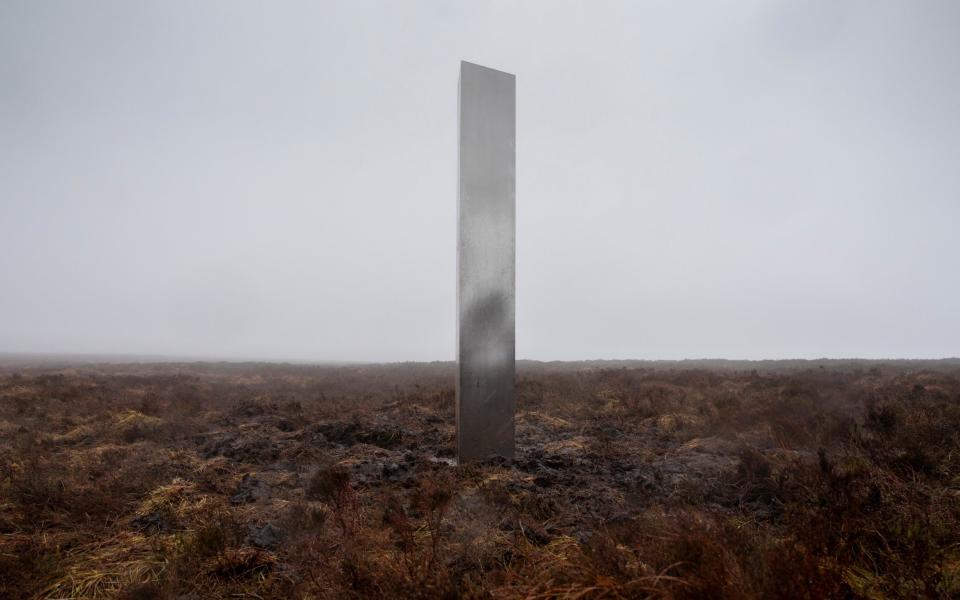
Speculation as to its origin – particularly on TikTok – was feverish. Had it been dropped by a helicopter? You certainly couldn’t drive it to the hilltop. Had it been carried up by local artists? Was this paying homage to the monolith in Stanley Kubrick’s 2001: A Space Odyssey, to which it bears a striking resemblance?
The strange feature was spotted by local builder Craig Muir, who said he was “taken aback” as it looked like “some sort of UFO”.
“It seemed like a very fine metallic [material]. It looked perfectly levelled and steady, despite the weather being windy.”
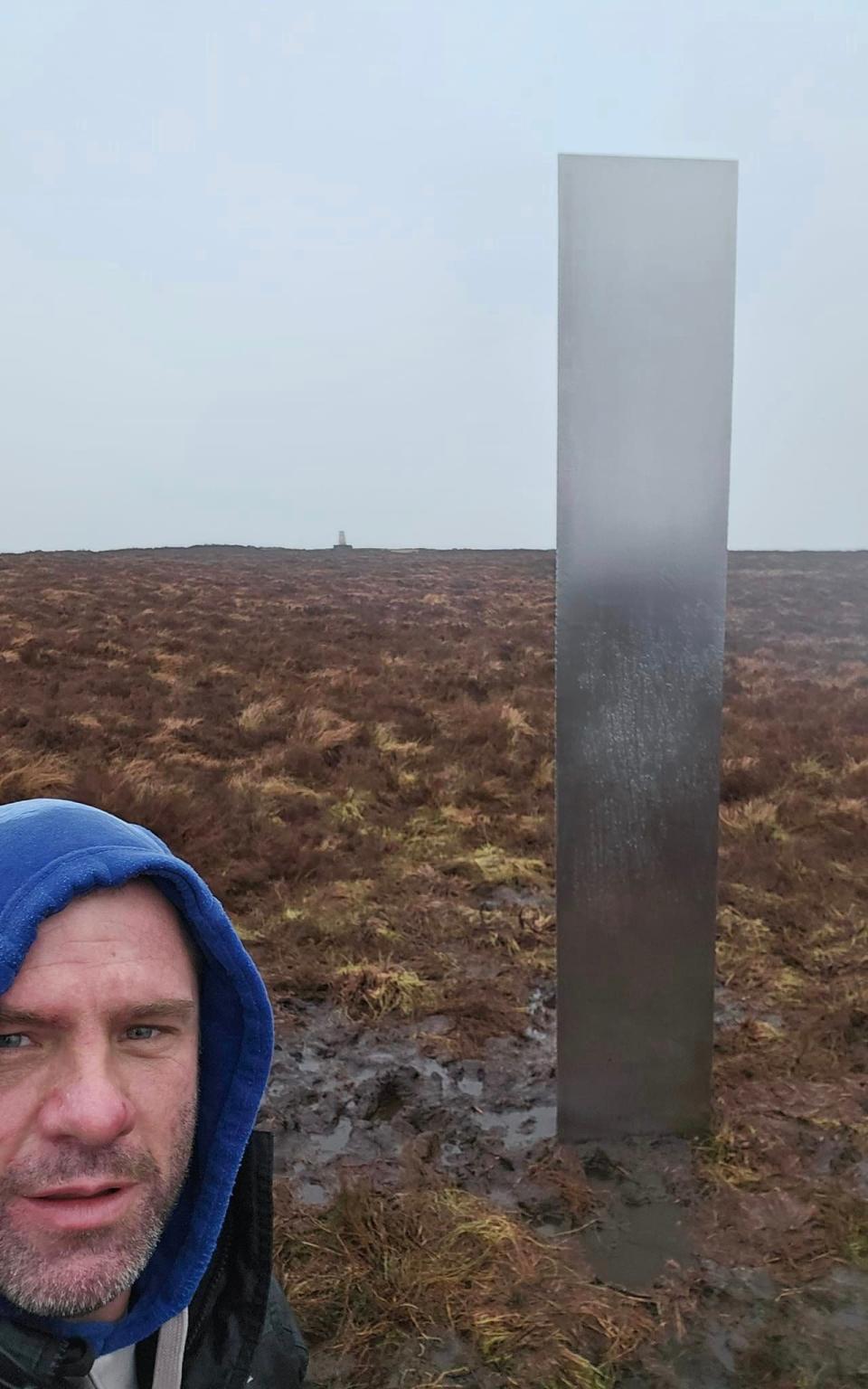
Since its discovery, locals tell me the car park has been full, and that tourists are heading to the town just to see it.
But on the day of my visit with The Telegraph photographer, because of the lashing rain, we are relatively alone.
The only people we meet are two walkers, both teachers from Clevedon High School, who have just dropped a pile of sixth formers to undertake a hike for their Duke of Edinburgh award.
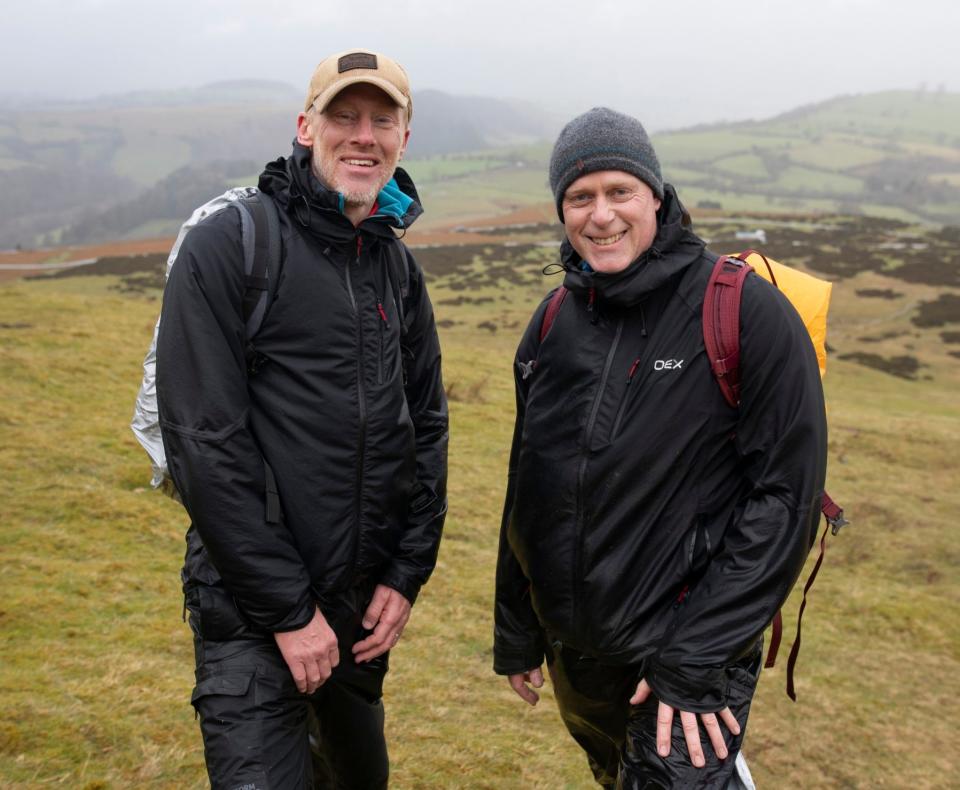
Tony Battista, 50, says: “It’s bizarre, really extraordinary. Well worth seeing. Maybe it’s done by a rural Banksy?”
His colleague, Mark Davies, 49, adds: “It is fascinating and quite eerie. No doubt the kids will see it later and be full of conspiracy theories. But we have no idea how it got there.”
As we continue our walk, the monolith mystery is none the clearer to me or the photographer, who is cursing the rain and worrying about his camera.
The main ascent up Hay Bluff is almost vertical, the sort of track that makes you wish you were a goat. A winding path does snake off the side, omitting the worst of the ascent, but even that is full of twists and precipitous drops, with large steps carved in to supposedly ease the journey.
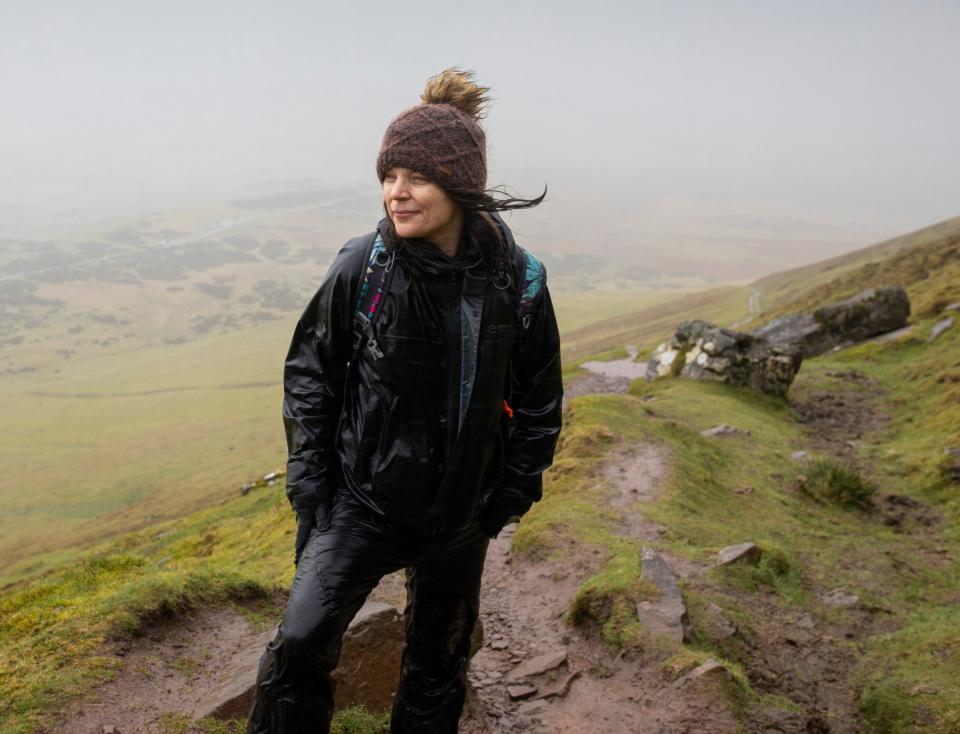
Given that February was one of the wettest on record, everything is precarious. Could people have carried such a structure up here? Only if they were mad.
But it seems the only viable option.
It would be unlikely that the structure was made up there, given you would need equipment, and would still have to carry the metal sheets.
But a helicopter expert, who did not wish to be named, dismissed the idea of a helicopter being involved.
He said the only way to fit a 10ft monolith inside a helicopter would be in a military one, but a helicopter with lifting tackle could potentially dangle it underneath for a short distance.
The expert also advised a helicopter would not fly to the top of a mountain at night as it would be deemed too dangerous.
When we make it to the top, it would be nice to describe the views, but we can’t see anything. A surveying trig point stamped with the red Welsh dragon reveals a height of 677 metres. I’m so pleased to have made it, and so drenched, I almost forget why we are here.
“There it is,” cries the photographer, pointing off to the right. “Oh yes,” I say. And what a strange sight.
Set a hundred metres or so from the trig point, and in among tussocks of boggy heather, it’s there.
We inch closer, dodging the pools of stagnant water and moss. It’s real, at least. Hollow, but seemingly held up by an interior pillar.
To inspect it, I take off my shades, which have been keeping the rain from my eyes. There’s more metal in the ground, which has clearly been exposed by those keen to check its foundations. These appear to keep it weighted and upright, but even then it is blowing about in the wind.
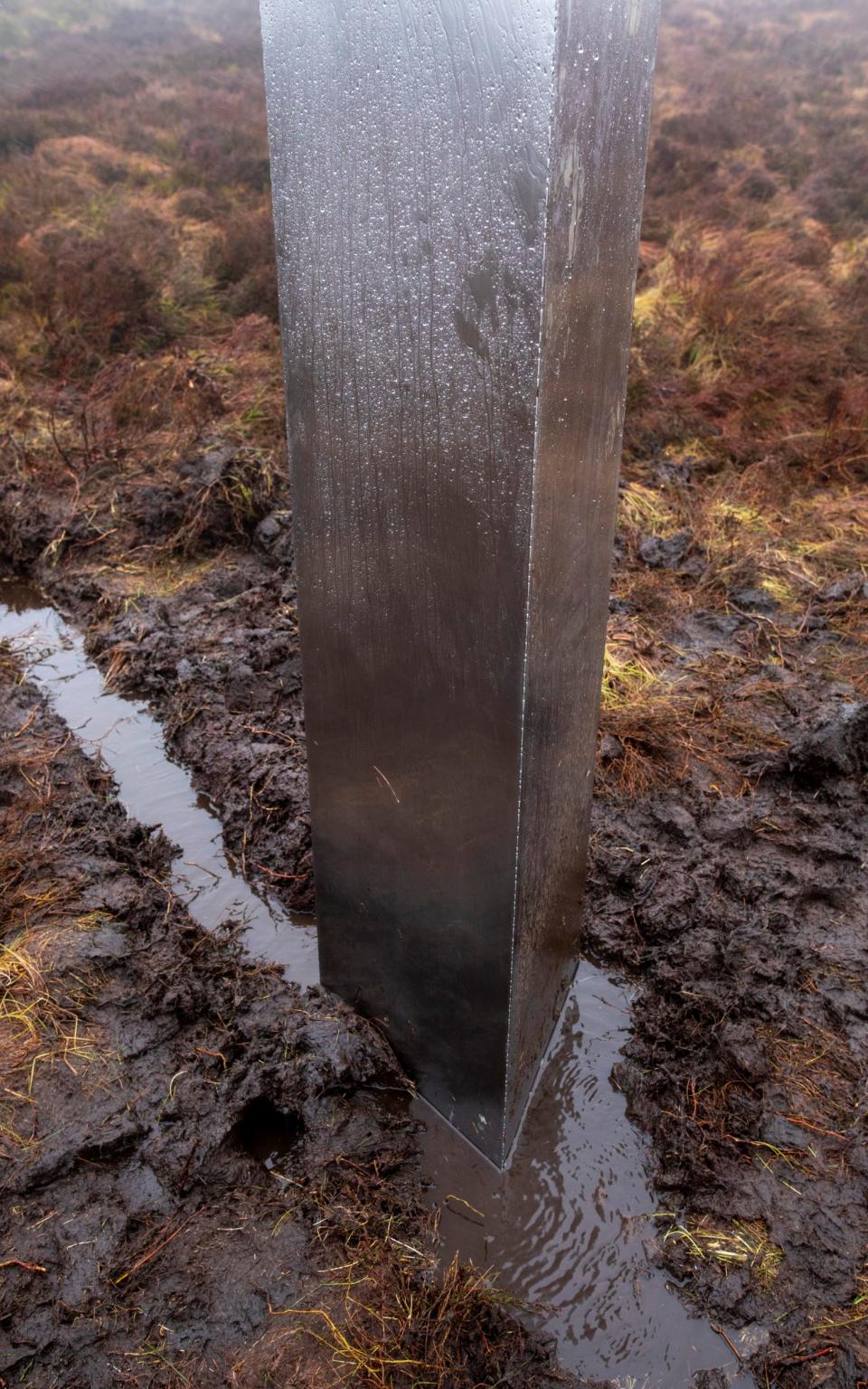
It does fit the scene quite well, given that it’s misty. But it’s not very Bauhaus, as in there’s no real function to it. You can’t even check your make-up in the reflection. We have no idea why anyone would set it here. Unless they are making a point against health and safety?
“What do you think?” I ask the photographer.
“It’s just to get people talking,” he says.
“And walking?” I add.
“Yep. That too.”
If it is to get people talking, it has done the job. Not least because it is not a one-off but part of a global collective.
The first monolith was spotted in Utah, Arizona, in 2020 by scientists during a helicopter survey of wild bighorn sheep. Satellite imagery later revealed it had been there since 2016.
Two weeks after it was discovered and removed, another monolith appeared, this time 13ft tall and in Romania.
Since then, dozens more have been spotted across the world, including in South America and Europe.
There are monoliths in Germany, Spain, the Netherlands and Turkey.
In the UK, they have been planted on a beach in the Isle of Wight, at the top of Glastonbury Tor, in the middle of Merry Maidens stone circle in Cornwall and on the fields at Dartmoor National Park. That one had the words “Not Banksy” carved into it.
But despite their proliferation, no one is really clear why they are there or who might be behind them.
The Most Famous Artist – an artist collective group in Tucumcari, New Mexico, which specialises in low-cost high-impact art projects – has suggested it may have created the initial Utah monolith.
“I’m here to say: I didn’t do the monolith, but I didn’t not do the monolith,” the collective’s founder, artist Matty Mo, helpfully said in a 2020 Instagram post.
But no one has claimed responsibility for the ones in Europe. And indeed, Banksy’s representative has denied he is involved.
It is hardly the first time, however, that mysterious art has appeared on our shores.
In the late 1970s and 1980s, the arrival of crop circles, with their intricate patterns, baffled farmers and sparked calls of alien activity and a connection to ancient hill forts and burial mounds.
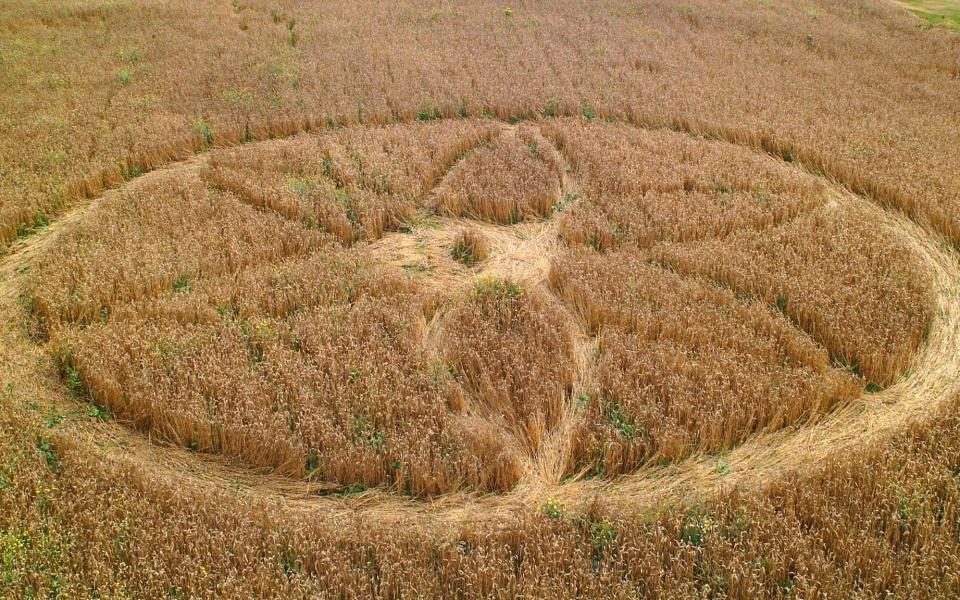
But in 1991, two farmers, Dave Chorley, and his friend Doug Bower, from Winchester in Hampshire, admitted they had been making them since 1976.
At the time, Dave told local news: “We wanted the UFO society to think a UFO had landed. After a few years they didn’t know whether to believe it or not.”
The tricksters revealed they travelled the countryside at night using a plank and a piece of rope to make the curious shapes, which appeared throughout Wiltshire and Hampshire.
Later, Dave’s son, Jim Chorley, told the BBC: “They were out on a Friday night and come back at 4 or 5 in the morning, and would put a little piece of corn on the kitchen table.
“They saw it as kind of a folk art form; it was the biggest canvas they could possibly ever use.
“They weren’t prepared for some of the backlash [when they came out]. I can understand why people still need to believe in the magic of it.”
Inevitably, there may be some who believe the appearance of these puzzling monoliths may be the work of external forces.
Daniel Jolley, social psychologist at the University of Nottingham, who specialises in conspiracy theories, says: “To me, this is entertaining. We don’t know why it’s been done.
“But to some who believe in conspiracy theories, this is even more exciting. It draws them in, like a movie.”
He says people who believe in conspiracy theories – for example, that these monoliths are from outer space but covered up by governments – are generally more anxious people who need answers to our complex world.
He adds: “People try to make sense of events, they seek answers. They struggle with uncertainty and have a distrust of authorities. They look for patterns and motives so they feel a little bit of control.
“Other people can just accept that these monoliths are there and we don’t know why.”
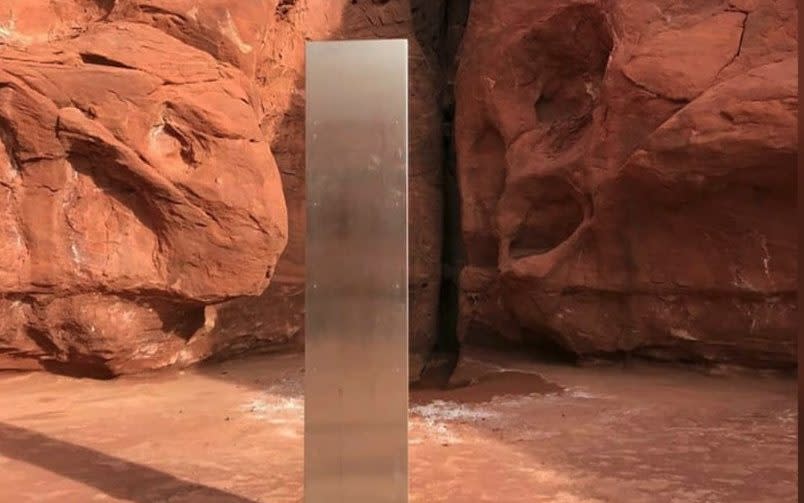
To contemporary art curator and critic Ellen Stone, however, they are an accessible and entertaining form of art.
She says the monoliths resemble huge pieces of metalwork made by American artist Richard Serra. Currently, magnificent pieces of his are spread across a kilometre of desert on Qatar’s Zekreet Peninsula.
She says: “For me, art is about three things – the creator, the context and the community of people who view it.
“But when these monoliths are unclaimed, you have the death of the author, so it is up to the viewer to decide what they mean.”
She says the fact the monoliths have popped up around the world is probably because they are relatively easy to make.
“Any artist with basic metal work skills can make one. And just like with the crop circles, it enables people to be part of something larger.”
She adds that where they are placed is “incredibly important”.
“The landscape is so important,” she explains. “The monoliths hark back to druid structures and single stones across our rural landscape.
“Plus it’s looking at 2001: A Space Odyssey in referential form. The monolith there was a stand-in for God and knowledge.
“It is a mysterious object and open for debate and meaning, just like these monoliths.”
Either way, back in Hay, locals seem delighted with the new addition.
James Walton, owner of The Old Black Lion Inn, says: “It’s certainly strange. But it’s nice that it’s been done in Hay.
“Locals are talking about it and are very intrigued as to how it got there.
“This is a special town, and it has definitely added to the mystique.”
He wishes to encourage people to come and see the monolith, and perhaps drop in for a pint on the way.
But as my photographer and I had to slide down the treacherous Hay Bluff on our backsides, narrowly avoiding ending up in A&E with sprained ankles, I can only suggest coming on a sunny day.

